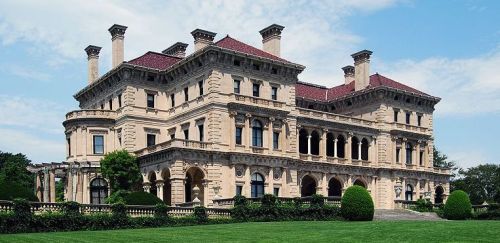‘Hunt’ing down history, Part 12
By Barbara Emery Moseley
NOTE: This series chronicles the generations of Vernon’s Hunt family, all related to Jonathan Hunt of “Governor Hunt Road” fame. If you’ve missed any installments in this series, you can catch up here!
Before the Hunt family’s move to Europe, Richard Morris Hunt had attended the prestigious Boston Latin School where, coincidentally, a Hunt cousin of his was headmaster. It was well known as a school that prepared boys for Harvard.
Instead, the family moved to Europe where Richard began his college education in Switzerland. Then, following in the footsteps of his brother, William Morris Hunt, he went to the École des Beaux Arts in Paris. There, he was the pupil and colleague of Hector Martin Lefuel, architect to Napoleon III.
In a letter to his mother, Richard complained that he “had been told America was not ready for the Fine Arts, but I think they are … Why shouldn’t our public buildings rival or even surpass those of Europe?” So, at the age of twenty-seven, he returned to the United States.
It was a disappointing beginning for the 27-year-old, but he resisted the ardent entreaties of his colleagues in Europe, that he return. His persistence was rewarded, and he became known as one of the greatest American architects of the 19th century.
The expansion of railroads across the country brought new opportunities for entrepreneurs. A new “class” of Americans evolved, including the Rockefellers, Wadsworths, Biddles, Carnegie, Vanderbilts, and Roosevelts.
They soon desired to build ostentatious private residences as well as opulent summer homes, and they clamored for Hunt’s designs. Two of the latter are the 70-room mansion “The Breakers” overlooking the Atlantic, and the somewhat smaller “Marble House,” both now museums in Newport, Rhode Island, and built for the Vanderbilts.
In 1860, while visiting his brother, William Morris Hunt, in Newport, Richard met Catherine Howland, daughter of a New York lawyer, who was visiting there with her sister. It was “love at first sight” and lead to a proposal of marriage. They married in 1861 and went to Europe on their honeymoon. Staying there for business, the first of four children, Richard Howland Hunt, was born in Paris, in 1862. (He was to become a distinguished American architect, like his father.)
Surpassing the Newport mansions, however, is “Biltmore” in Asheville, North Carolina. Built for George Vanderbilt, it is the largest house in the United States. Built on the design of a French chateau, it is set on 120,000 acres. There, Vanderbilt experimented with blending those acres into farm, park, and forest divisions and incorporating conservation ideas that were novel for the day.
Last month’s episode promised to reveal the Richard Morris Hunt achievement that “touches the heartstrings of hundreds of people daily.” The pedestal of our beloved Statue of Liberty is steadfastly supported by a pedestal designed by Richard Morris Hunt. Its cornerstone was laid on August 5, 1884.
Next month will reveal where a sculptor, hired to embellish one of Hunt’s many public buildings, played a trick on him.
Photo of The Breakers by TRivers, used under Creative Commons License

